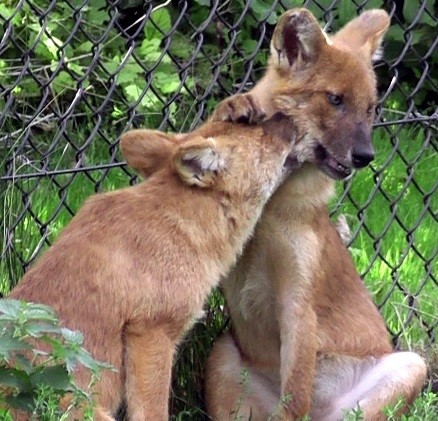
ResourcesDhole Working Group

Coordinator:
Nucharin Songsasen – Smithsonian Conservation Biology Institute
Members:
Arjun Srivathsa – Wildlife Conservation Society–India
Girish Punjabi – Wildlife Conservation Trust, India
Bhaskar Acharya – Independent Consultant
Heike Maisch – Thüringer Zoopark Erfurt, Germany
Jan Kamler – Wildlife Conservation Research Unit, University of Oxford
Kyran Kunkel – Conservation Science Collaborative and University of Montana
Sheng Li – Peking University
Phuntsho Thinley – Ugyen Wangchuck Institute for Conservation and Environment Research
Linnea Worsoee Havmoeller – Natural History Museum of Denmark, University of Copenhagen
Monsoon Pokharel Khatiwada – Research Unit of Biodiversity, University of Oviedo, Spain
Ambika Prasad Khatiwada – National Trust for Nature Conservation, Nepal
Patrick Roux – Reserve Zoologique de la Haute-Touche, France
Pallavi Ghaskadbi – Wildlife Institute of India
Martin Gilbert – Cornell Wildlife Health Center, Cornell University
Main issues and strategies to address these issues:
The dhole (Cuon alpinus) ranges throughout much of South and Southeast Asia and is categorized as Endangered on the IUCN Red List. The most recent assessment estimates that there are 4,500-10,500 dholes, of which only 949-2,215 are mature individuals living in fragmented habitats in southern China, India, Bhutan, Nepal, Myanmar, Thailand, Cambodia, Laos, Malaysia and Indonesia. However, due to the lack of data on distribution, relative abundance, and population trends, especially in Southeast Asia, the true conservation status of this species is unknown.
The first Population and Habitat Viability Assessment Workshop was conducted in 2019 (Kao et al 2020). A threat analysis conducted during the workshop has identified four main categories of threats to dhole populations across the species’ distribution range. These include habitat and prey loss, human-dhole conflict, domestic dogs and disease transmission and insufficient scientific knowledge. To address the four main issues, the working group has set the following goals.
1. Generate and maintain information on distribution and connectivity to ensure viable population.
2. Develop context specific methods for estimating dhole abundance, demographic and ecological requirements.
3. Create and update the list of dhole publications.
4. Develop and distribute standard protocols for collecting and storage of health samples with guidance on accessing appropriate diagnostics. (https://wildlife.cornell.edu/people/martin-gilbert)
5. Evaluate human-dhole conflicts and existing method to mitigate the conflicts across dhole distribution range.
Current research and conservation projects:
1. The impact of health on dhole conservation through the development of sampling protocols and sharing of health information and expertise. https://wildlife.cornell.edu/people/martin-gilbert
2. The Wild Canids India Project - https://www.wildcanids.net A project examining the ecology, distribution and conservation of multiple canids & one hyenid found in India. The dhole is a focal species of interest.
3. Status and conservation of dholes in Parsa National Park, Nepal. https://wildlife.cornell.edu/people/martin-gilbert
4. Dhole ecology and conservation in Indonesia. Website: https://snm.ku.dk/english/staffsnm/research-and-collections/?pure=en/persons/394173
5. Movement ecology of dholes in Thai protected areas. https://movementoflife.si.edu/species/dhole/
6. Conservation priorities for dhole in Nepal and globally. The main objectives are to:
- Update the global multi scale species distribution model for dholes
- Update the global scale connectivity analysis of dhole sub-populations
- Build a global scale PVA for dholes using meta population framework
- Conduct an expert occupancy survey for dholes in Nepal with fine scale connectivity analysis
7. Evaluating community managed livestock insurance schemes and conflict prevention for dholes and large carnivores in eastern and central Nepal Himalayas.
Citation:
Kao, J., N. Songsasen, K. Ferraz and K. Traylor-Holzer (Eds.) 2020. Range-wide Population and Habitat Viability Assessment for the Dhole, Cuon alpinus. IUCN SSC Conservation Planning Specialist Group, Apple Valley, MN, USA.
Overview of Dhole Literature 2021
The Dhole Conservation Action Plan for Nepal (2025-2035)

